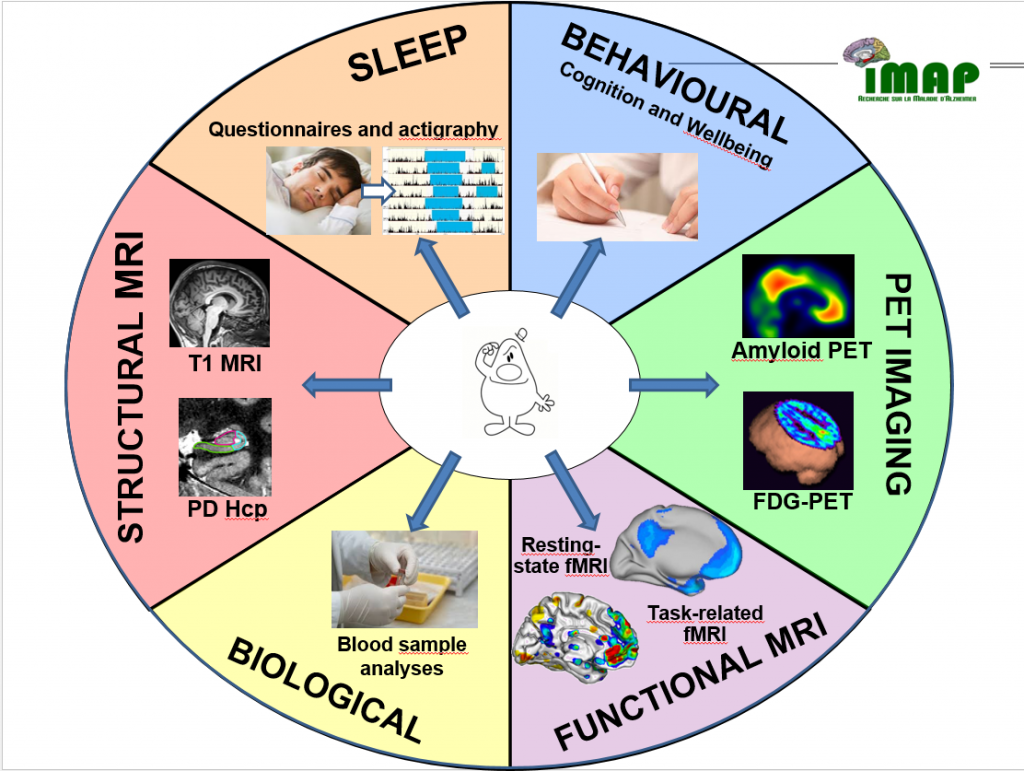Imap
The IMAP / IMAP+ is a large observational study aimed at improving our understanding of healthy and pathological ageing and funded by Fondation Plan Alzheimer (Alzheimer Plan 2008-2012), Programme Hospitalier de Recherche Clinique (PHRC National 2011 & 2012), Agence Nationale de la Recherche (ANR LONGVIE 2007), Région Basse Normandie, and Institut National de la Santé et de la Recherche Médicale (Inserm).
230 healthy individuals ranging from 18 to 90 years old and 165 patients with different degree of cognitive impairment (with subjective cognitive decline, mild cognitive impairment, Alzheimer’s disease and other dementia) were included in this study. They had detailed neuropsychological examination, sleep assessment (including actimetry and polysomnography), questionnaires assessing quality of life and lifestyle factors, blood sampling and complementary neuroimaging scans including structural and functional MRI and PET scans to measure glucose metabolism (FDG-PET) and beta-amyloid deposition (florbetapir-PET). Participants were followed-up over 18 to 36 months with the same clinical, neuropsychological, sleep, questionnaires, blood sampling and neuroimaging examinations.

This project involves 6 partners: (1) Inserm (Caen) with Gaël Chételat, PI and project coordinator, and Vincent de La Sayette, MD main investigator; (2) the CHRU of Lille with Florence Pasquier; (3) the Unit U930 associated to the CIC-IT 806 (Denis Guilloteau, Tours); (4) the team LDM-TEP in UMR CEA-CNRS 6232 (Louisa Barre, Caen); (5) the Unit U919 (Denis Vivien, Caen) for biomarkers; and (6) Unit U614 (Didier Hannequin and Dominique Campion, Rouen).

More than 30 articles have been published in peer-reviewed journals using the data collected in the IMAP/IMAP+ study, and publications are still on-going. Among the subjects of interest studied: multimodal neuroimaging to better understand the physiopathological mechanisms of the disease, brain mechanisms underlying specific cognitive deficits, role of amyloid deposition over the course of the disease, influence of brain connectivity of brain lesion topography and spread, relationships between lifestyle factors or sleep quality and different neuroimaging biomarkers, brain changes over the course of Alzheimer’s disease, subjective cognitive decline, hippocampal subfields, new biomarkers for early diagnosis and innovative neuroimaging developments…